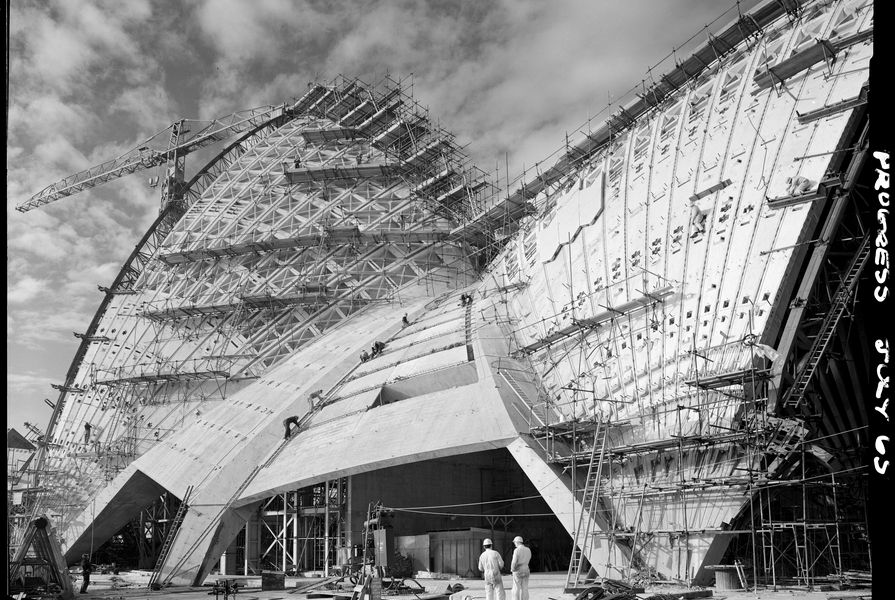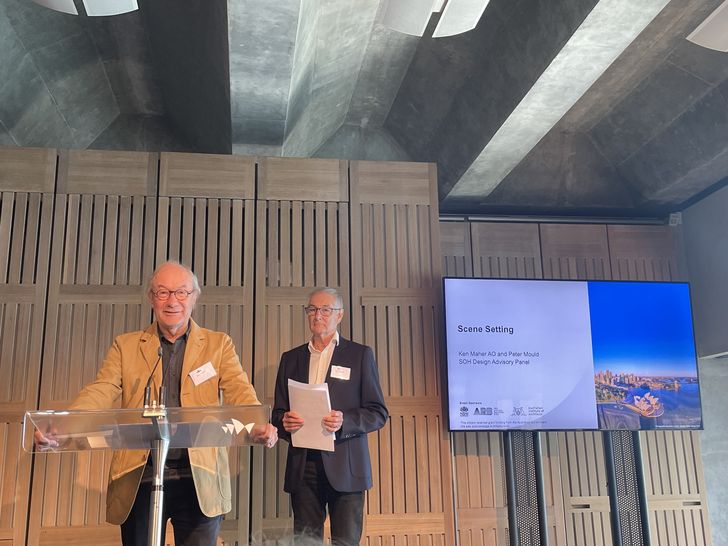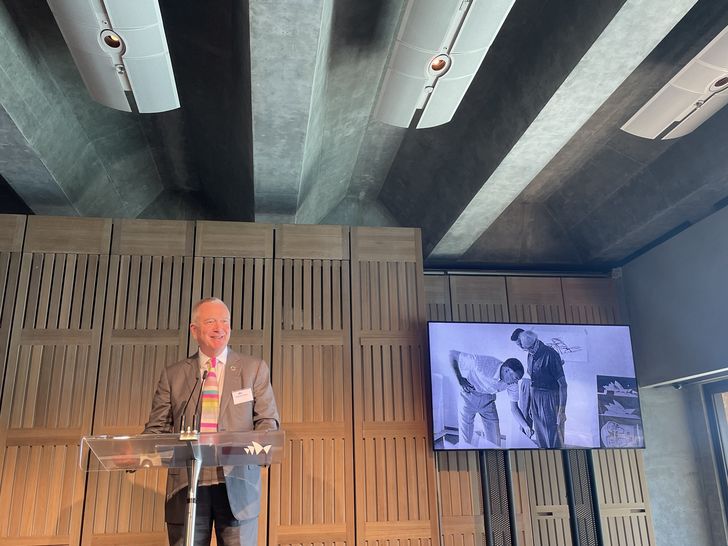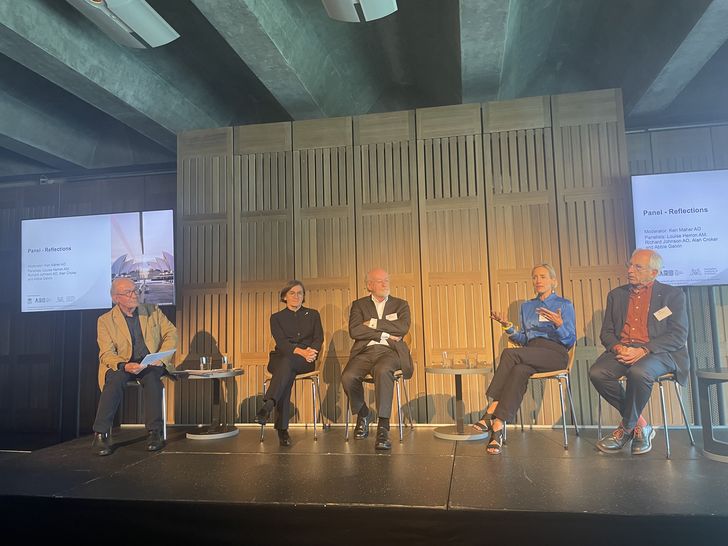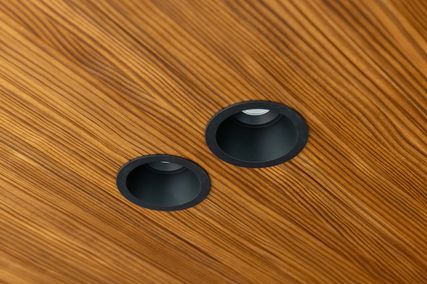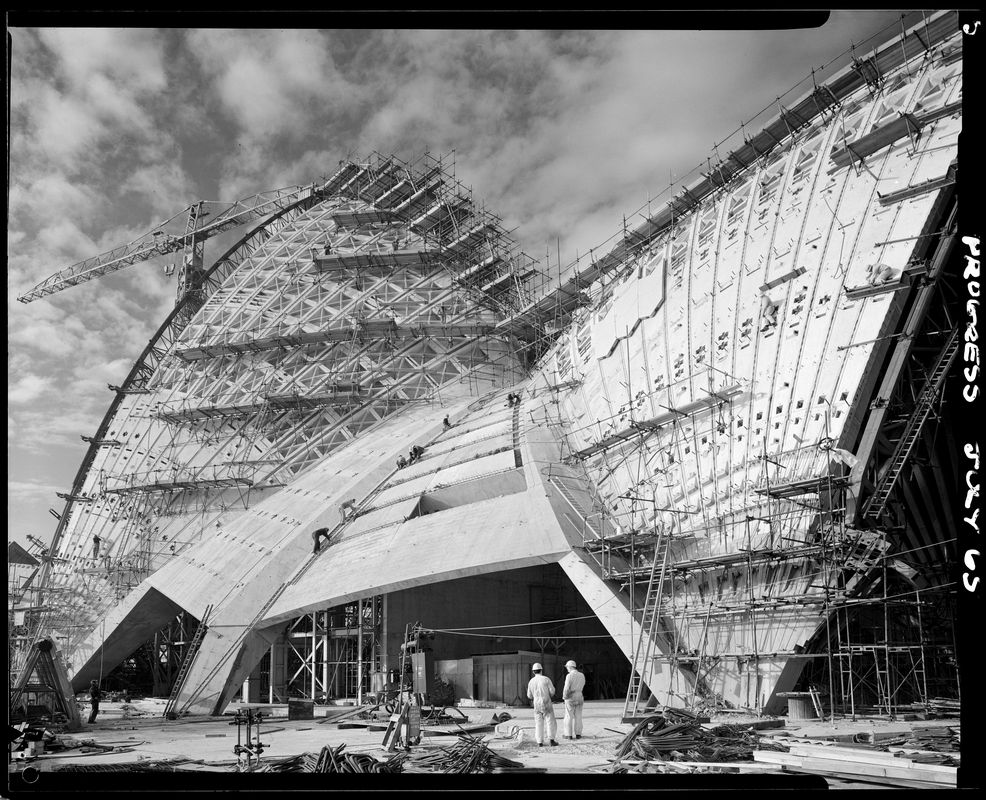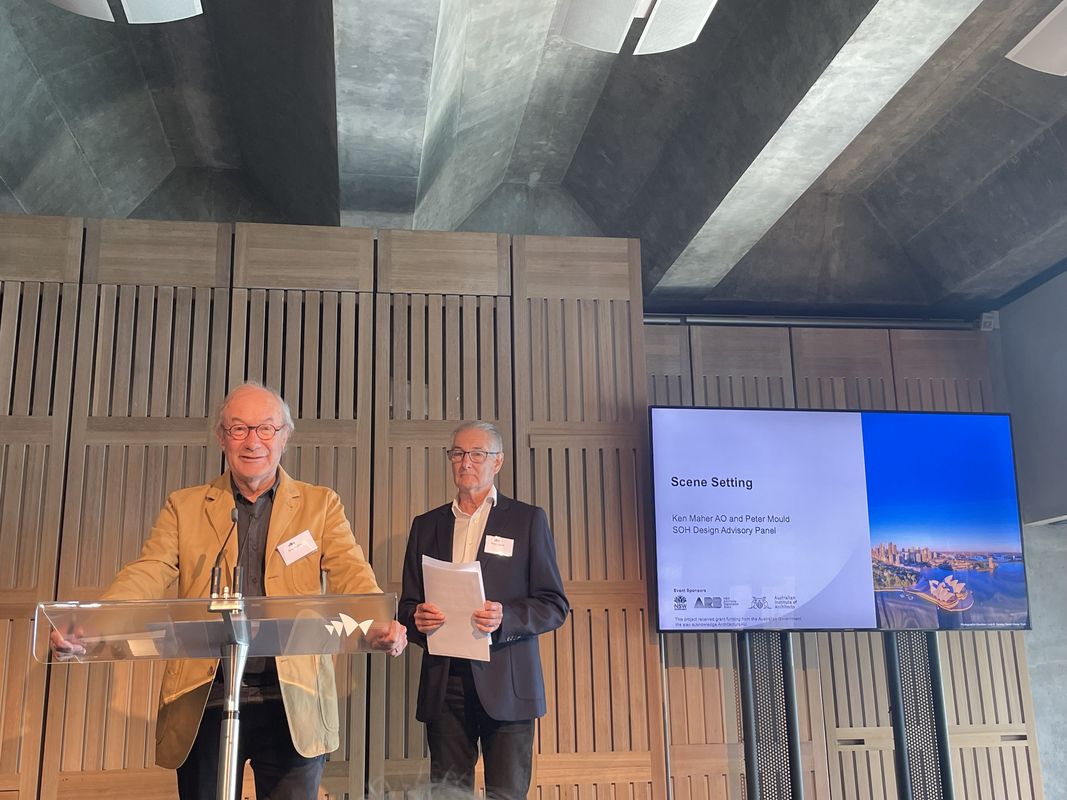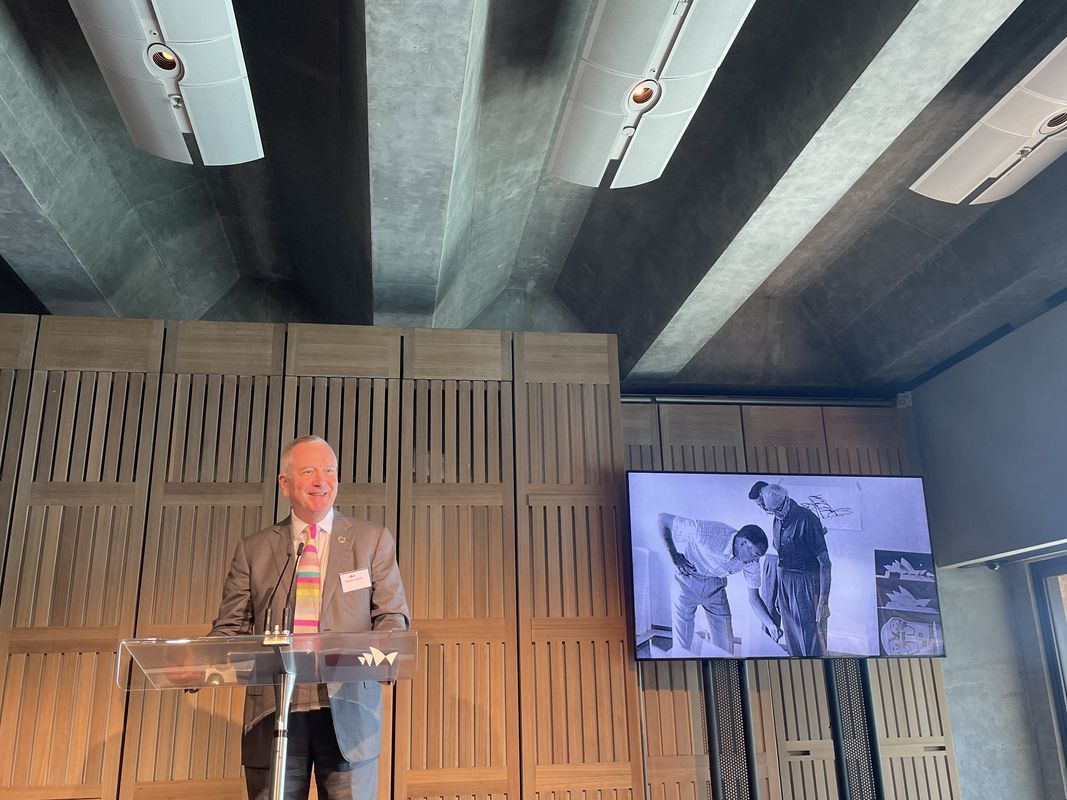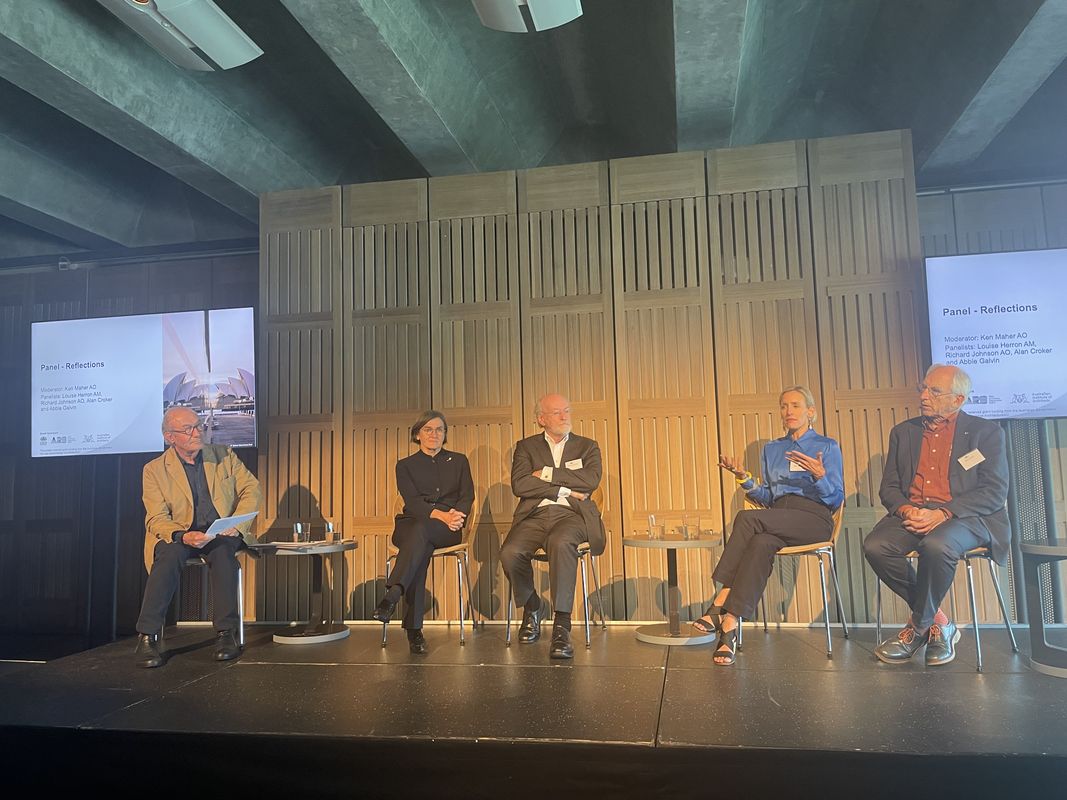The Sydney Opera House started with what CEO Louise Heron described as a “big bang of creativity” and over the past 50 years (and more), its story has been wrapped in wonder, myth, drama, and perhaps most importantly, the building of a nation.
On the 69th anniversary of the announcement of an international competition to design a national opera house, SOH assembled a legion of architects, engineers and historians, in a one-day symposium, themed “Concept, Innovation, Renewal,” to explore the past, present and future of this “masterpiece of 20th century architecture.”
Ken Maher and Peter Mould, outgoing chairs of the Sydney Opera House’s Design Advisory Panel, introducing the symposium.
Image: Courtesy Sydney Opera House Trust
Penelope Stannard of the Museum of History NSW painted a picture of political and cultural scheme in the post-war era of national building, with the high-arts used as “policy of objects of nationhood and national identity.”
Philip Goad added extra colour to scheme with a survey of the design competitions of the time. “[Jørn] Utzon’s design did not appear in a vacuum,” he said, as he took the audience though local and international examples of concrete shell structures, contemporary performing arts complexes and new forms of monumental and spatial expression.
The “mood for formal and structural experiment” had been evident in Australia in the various competitions preceding the opera house, including in the winning design for the Australian Academy of Science in Canberra (the Shine Dome) by Roy Grounds, which was already under construction at the time of the Sydney Opera House competition, as well as an initial scheme for the Sidney Myer Music Bowl in Melbourne.
“Utzon’s design in architecture’s progressive circle was locally on point,” Goad said, “Internationally, experiments with thin concrete and tensile roof structures was at its peak in 1956.
As was the fascination with “monumentality and the search for significant form.”
Tristram Carfrae of Arup speaking at the Sydney Opera House: Concept, Innovation, Renewal symposium.
Image: Courtesy Sydney Opera House Trust
The symposium explored Utzon’s ideas of additive architecture, through architect Richard Johnson who worked with Utzon on formulating a set of guiding principles for renewal projects. Engineer Tristram Carfrae of Arup, shared some of the engineering achievements that have contributed to the Sydney Opera House that were later applied to contemporary projects such as the completion of the Sagrada Familia, Thomas Heatherwick’s Bombay Sapphire Distillery, and even Cox Architecture’s Kurilpa Bridge in Brisbane.
We also heard from Anne Watson who detailed Peter Hall’s role in completing the Opera House interiors as well as Andrew Hayne of ARM Architecture whose work in renewing the Opera House Concert Hall sensitively rectified its acoustic woes.
But perhaps the biggest revelation of the day was the research by Paolo Tombesi and his team, which painstakingly delved into the archives of Hornibrook, which built stages two and three of the project, analysing more than 5,000 drawings, photographs and site minutes, in an effort to gain a detailed understanding of how the opera house was built.
“They contrast the cliché of the eureka moment,” Tombesi said. “It shows unimaginable levels of commitment and professionalism on the side of the general contractor.”
We’ve heard a lot about nation building and national identity in symposium – the symbolism and optimism wrapped up in the daring form of Utzon’s design.
But, as Tombesi surmized, nation building is inextricably linked to the literal act of building the opera house.
“Hornibrook’s drawings are not contract documents, they are shop drawings. And shop drawings describe, conventionally, the industrial capability of a country at the moment of their production,” he said.
“So without taking anything away from the leap of imagination that led to the construction of the sails, the same process owes a huge debt to building culture at a particular junction in the history of a country, Australia.
“This shows that Australia should start looking at its construction industry and how we developed over time and what nation building produces.
“Hornibrook was able to produce 5,300 drawings for the Sydney Opera House because they’d been involved with the construction of the country for 30 years.”
A panel discussion at the Sydney Opera House: Concept, Innovation, Renewal symposium.
Image: Courtesy Sydney Opera House Trust
The symposium began with a description of the Sydney Opera House as a mix of “Danish imagination and an Australian willingness to give it a go.” But in reflecting on the past 50 years of public building and trajectory towards increased government risk aversion, it became clear that the opera house was actually the result of “an incredible, serendipitous, unrepeatable opportunity,” as Tombesi said.
Louise Heron closed the symposium with musician Tim Minchin’s tribute to the Sydney Opera House Play It Safe – a poignant bitter-sweet moment that cemented the “unrepeatable” nature of this feat.
Heritage architect Alan Croker and author of the Sydney Opera House’s conservation management plan, said, “anyone who’s involved with this place is elevated and encouraged and almost driven to achieve a result which is worthy of the Sydney Opera House. It inspires everybody to do their very best. That’s why it’s such an exceptional building.”
It leaves me wondering what exceptional and inspirational feats we will miss by continuing to “play it safe.”
ArchitectureAU was a media partner of the Sydney Opera House: Concept, Innovation and Renewal symposium.

